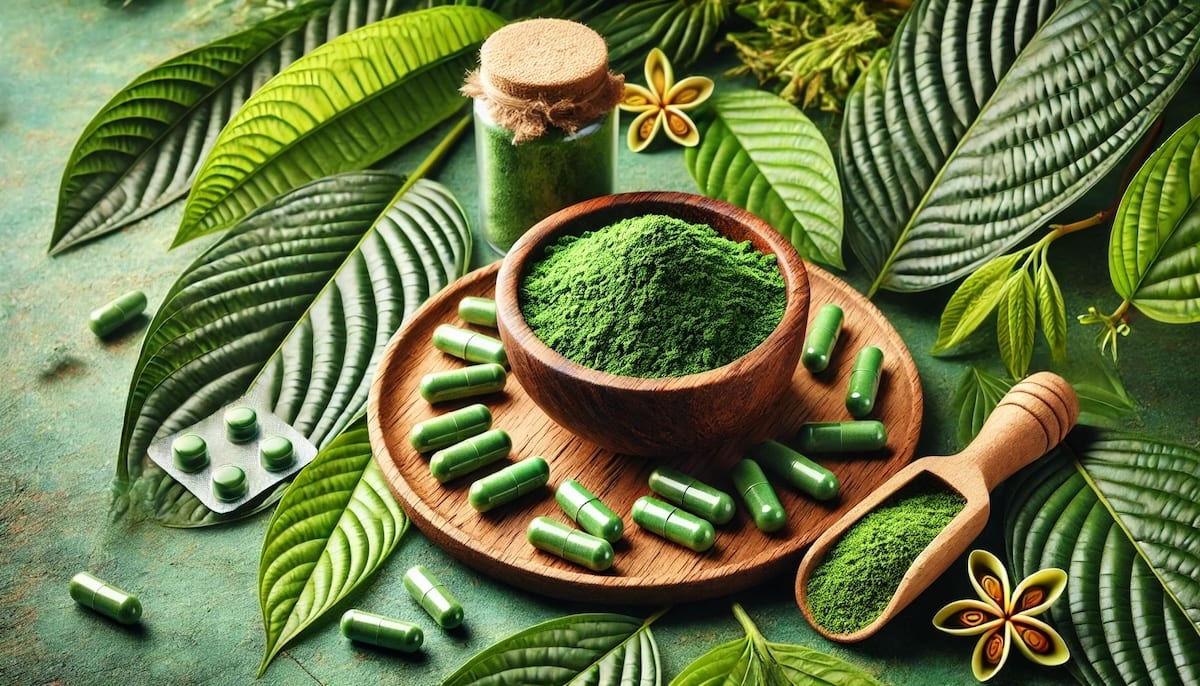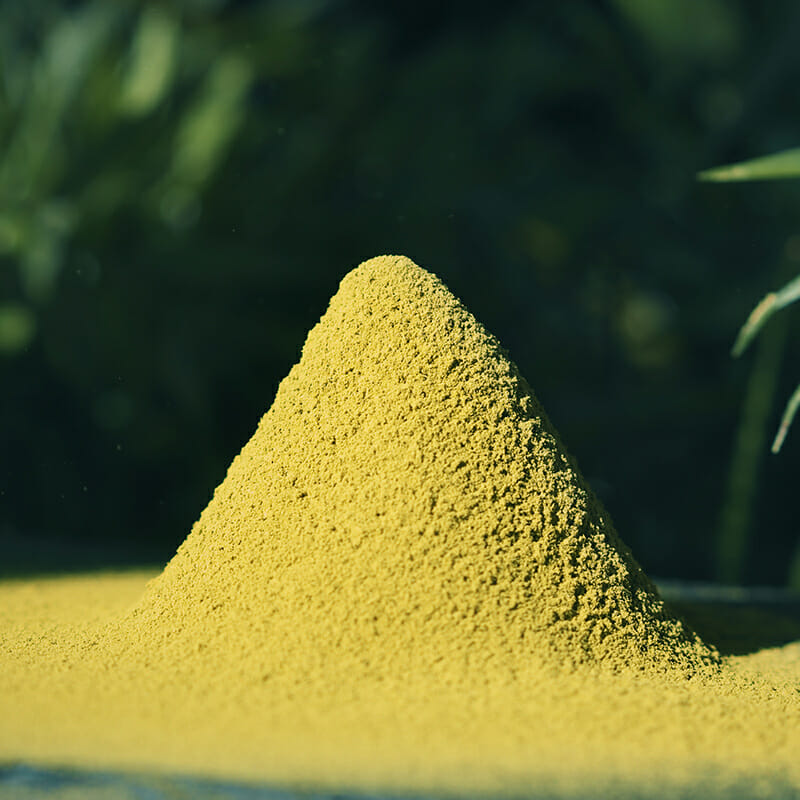Although Kratom has only recently gained traction in the Western world, it has a storied past among many ancient Asian cultures. This Kats Botanicals guide helps explain how Kratom evolved from a favored traditional herb in ancient practice to a controversial botanical in the United States today.
Natural Habitat
Kratom, by the Latin name Mitragyna speciosa, is an evergreen tree native to the tropical jungles of Southeast Asia. Kratom trees grow rapidly in fertile rainforest soil and can reach a height of 20 feet within two years of sprouting.
Kratom is a member of the Rubiaceae coffee tree family, and there are three colors of Kratom leaf veins: Red Vein, Green Vein, and White Vein. While Green Vein and White Vein leaves do exist, they are rare. Most Kratom strains are processed from Red Vein leaves.
Early Cultivation
 The Kratom plant prospered in the wild for hundreds of years before people began to cultivate the tree in order to better enjoy its leaves. People from Thailand began cultivating Kratom in a suitable climate in the early 20th century.
The Kratom plant prospered in the wild for hundreds of years before people began to cultivate the tree in order to better enjoy its leaves. People from Thailand began cultivating Kratom in a suitable climate in the early 20th century.
Today, Kratom plants are cultivated throughout Southeast Asia, although some countries in this region have heightened regulations of the production and sale of Kratom. Kratom production and export was legalized in Thailand in 2018, but because it is limited to medicinal products, all Kratom in the United States still comes from Indonesia.
As Kratom gains popularity, some people in climates less suitable for Kratom cultivation have begun to grow Kratom trees inside. Because Kratom trees require lots of space, light, and water, this can be an inordinately arduous project.
Early Uses
Kratom was popular among traditional Southeastern villagers, who would brew Kratom leaves in a tea, smoke them in pipes, or chew them plain. Kratom leaves by themselves have a bitter taste.
Kratom was especially valued by peasants and manual laborers who felt Kratom could ease soreness brought on by physical labor.
There was an important role for Kratom in traditional medicinal techniques of Southeast Asia; Kratom leaves were often used in poultices and salves to moderate the discomfort of wounds and manage a variety of ailments.
Kratom in Culture
Landowners were known to hand out Kratom to their workers to improve working productivity. Peasants would chew the leaves to boost their motivation.
Leaves were also dried and made into a tea to be enjoyed in the villages. In many ways, contemporary Kratom use is unchanged; people still chew leaves and drink Kratom tea to inspire their optimism and promote a sense of calm.
Kratom’s Discovery Outside Southeast Asia
 Kratom was discovered by the Western world in 1831 when the Dutch botanist, Pieter Willem Korthals, documented the plant.
Kratom was discovered by the Western world in 1831 when the Dutch botanist, Pieter Willem Korthals, documented the plant.
Immigrants from Southeast Asia brought Kratom to the United States in the 1980s and 1990s, but it has only gained traction in the United States over the past two decades.
It is interesting to note that while Kratom was traditionally enjoyed by manual laborers in Southeastern Asia, the majority of the United States Kratom market consists of people across multiple demographics.
Kratom around the World
After the recent regulatory wave, Kratom is highly regulated or illegal in many European countries. Even countries that have traditionally cultivated Kratom have banned Kratom cultivation.
In Thailand, the Kratom Act of 1943 banned Kratom cultivation, export, and use. It’s thought that the act was an attempt to suppress the Kratom market in favor of the taxable opioid market. Standing trees were allowed to live, and peasants continued to harvest Kratom leaves. In 2018, Thailand legalized medicinal Kratom.
Kratom has been banned in Malaysia since 1952, although Kratom use remains widespread thanks to the native, wild trees.
Although the majority of Kratom in the United States is sourced from Indonesia, there is some concern that the Indonesian Minister of Health intends to make Kratom illegal in 2022.
Kratom in the United States
Kratom has been banned in seven states, and the FDA hasn’t approved Kratom.
In 2016, the Drug Enforcement Agency (DEA) called for a change to classify Kratom as a Schedule I drug, which would make it illegal throughout the United States. The overwhelmingly negative response compelled the DEA to walk back the scheduling and leave the legality of Kratom up to the states.
Some states enforce statewide bans, while others allow local legislation regarding the legality of Kratom.
Contemporary Uses for Kratom
Kratom leaves are harvested and ground into a powder. People ingest Kratom powder by itself or mixed into foods or beverages.
The “toss-and-wash” method of ingestion is popular among people on-the-go. Toss your dose of Kratom powder to the back of your tongue and follow with water. Others mix their Kratom into a fruit juice to mask the taste.
Capsules are a flavorless way to incorporate Kratom powder into your diet if you don’t enjoy the bitter or earthy flavor of Kratom.
Kratom Tea
 One of the best ways to integrate Kratom into your daily routine is to drink Kratom tea in the mornings. Your homemade Kratom tea can replace your morning coffee ritual, although some people prefer to mix Kratom powder into their coffee.
One of the best ways to integrate Kratom into your daily routine is to drink Kratom tea in the mornings. Your homemade Kratom tea can replace your morning coffee ritual, although some people prefer to mix Kratom powder into their coffee.
To make tea, simply pour boiling water over Kratom powder and stir vigorously before letting it steep for 5-7 minutes. The Kratom powder won’t dissolve in the water; pour the tea out of the teapot while leaving the dregs.
Enjoy your tea with honey, sugar, or lemon, or mix with another herbal tea to dilute the strong flavor of Kratom.
The Future of Kratom
Research into Kratom is ongoing and regulations regarding the substance around the world are in constant flux.
In the United States, the proposed Kratom Consumer Protection Act is a reason for optimism among Kratom enthusiasts. The act would ensure that Kratom remains legal to buy in the United States, and it increases the safety associated with purchasing Kratom by preventing the sale of adulterated products.
The FDA is reviewing the available information on Kratom, which may result in a change of policy in the future.
Contemporary Kratom Cultivation
Kratom can still come from wild-grown trees or plantation-cultivated Kratom trees. The Kratom leaves that are used to produce the Kratom powders available from reputable dealers like Kat’s Botanicals are rigorously tested to ensure quality and consistency.
Thanks to hundreds of years of experience, Kratom farms know how to harvest Kratom leaves to ensure ideal potency and alkaloid levels. Kratom leaves are dried at a separate drying facility.
The drying process for Kratom leaves relies mostly on natural sunlight, although leaves are sometimes taken inside for part of the drying process. For example, Red Vein Kratom is fermented in large bags which causes the end product to have a red hue to the powder.
Traveling Kratom
Kratom will vary based on the strain cultivated and the harvesting and processing process. Kat’s Botanicals has diligently studied the Kratom industry to determine the best practices for Kratom production.
When Kratom is dried, pulverized, and ready to be sent out to customers, it is packaged to make the international shipping trip.
The way Kratom is packaged will affect the quality of the product when it finally arrives in the United States. Porous packaging does not properly protect the leaves or Kratom powder from moisture.
When purchasing Kratom, work with a trusted vendor who uses insured international shipping.
Sourcing High-Quality Kratom
 As with any herb that you’d hope to provide holistic benefits, finding a high-quality product should be a priority.
As with any herb that you’d hope to provide holistic benefits, finding a high-quality product should be a priority.
Kats Botanicals carries full-spectrum products, meaning our Kratom powder includes all the alkaloids and lipids found in the whole Kratom leaf. If we can learn anything from the traditional methods of ingesting Kratom, it’s that the various chemical compounds within the Kratom leaf are best enjoyed together.
Purity and potency are two important factors to consider when searching for a good Kratom product. Kats Botanicals Kratom products are lab-tested by a third party to ensure purity. Our Kratom products are tested for pathogens, pesticides, and heavy metals, and contain one ingredient: 100% Mitragyna speciosa.
Kats Botanicals is a US-based Kratom vendor; our excellent customer service can help Americans bridge the gap of distance and culture with Kratom farmers in Southeast Asia. Through Kats Botanicals, you can know exactly what you’re purchasing and have complete confidence in its purity and ethical production.
Final Thoughts
Kratom has a long history, and with the advocacy in the United States and other countries, it looks to have a promising future. Some states continue to be an uphill battle, but Kratom advocates include law enforcement officials, lawyers, doctors, and even U.S. Senators and Representatives.
If you’re considering beginning to take Kratom products, buy high-quality products that contain only dried Kratom leaves. Kats Botanicals carries wholesome Kratom products sourced from their natural environments. Our Kratom products are ethically sourced; we have working relationships with expert farmers who harvest top-notch Kratom leaves.
It’s normal to have lingering concerns regarding introducing Kratom into your daily routine. Reach out to Kats Botanicals to learn more about how our Kratom products may improve your life.











